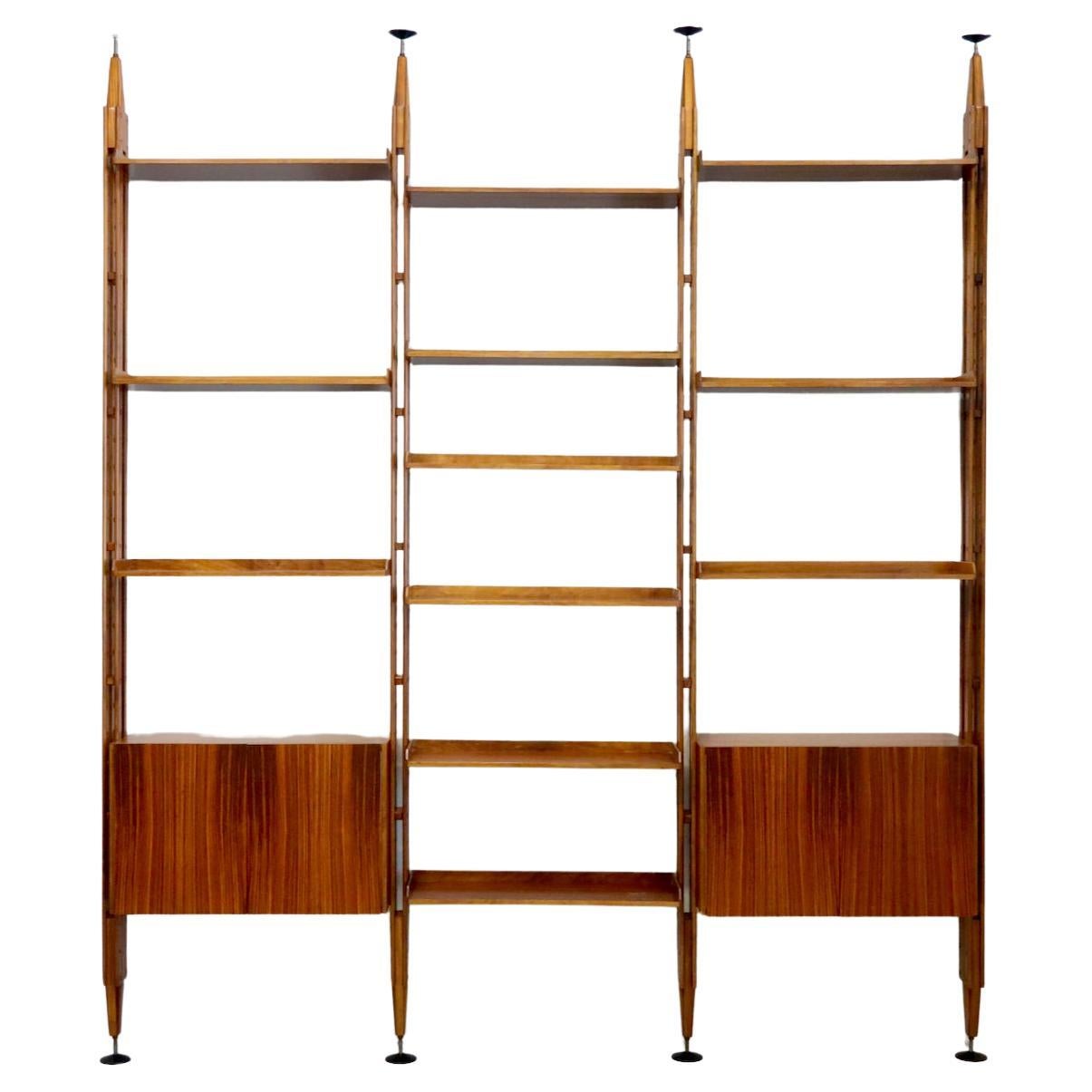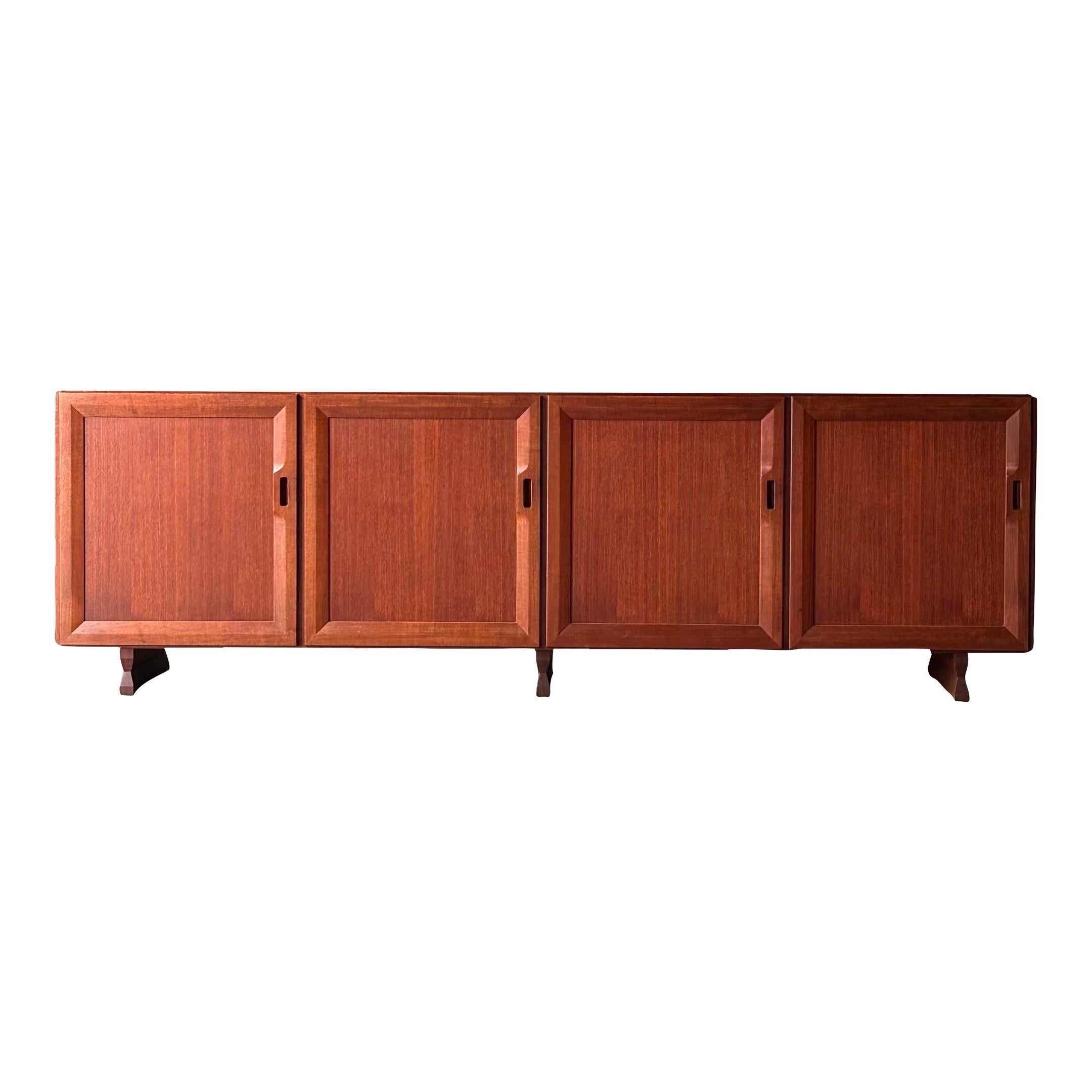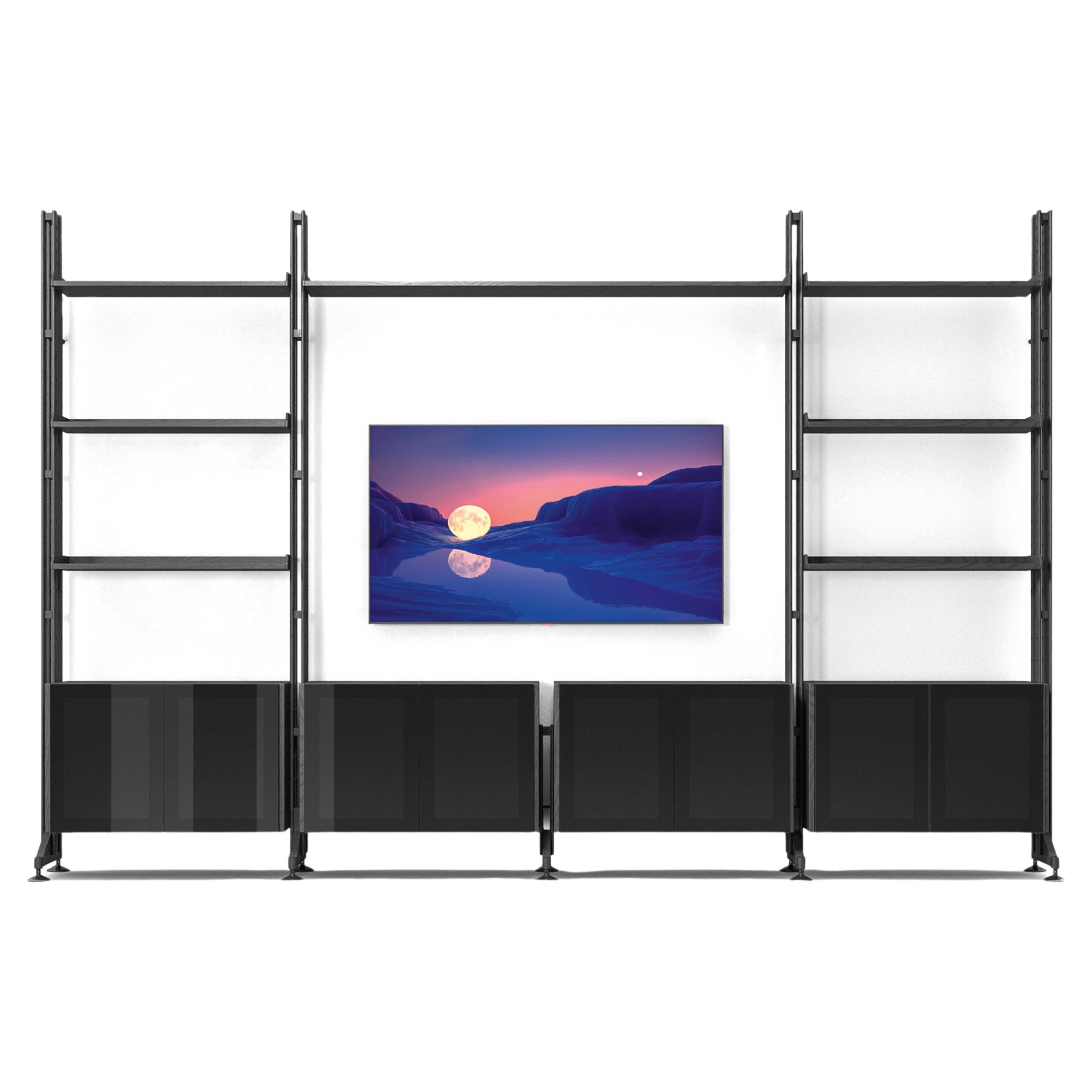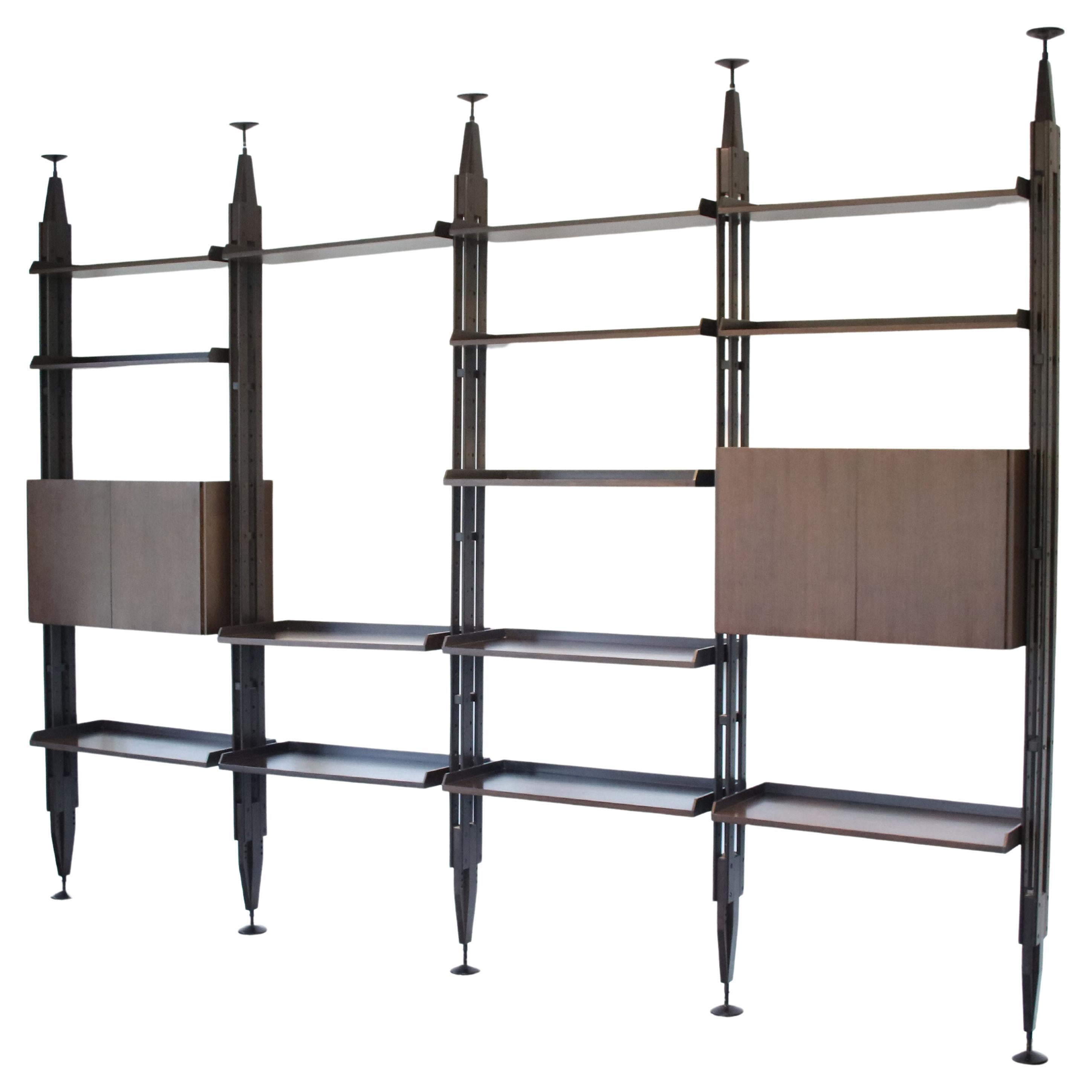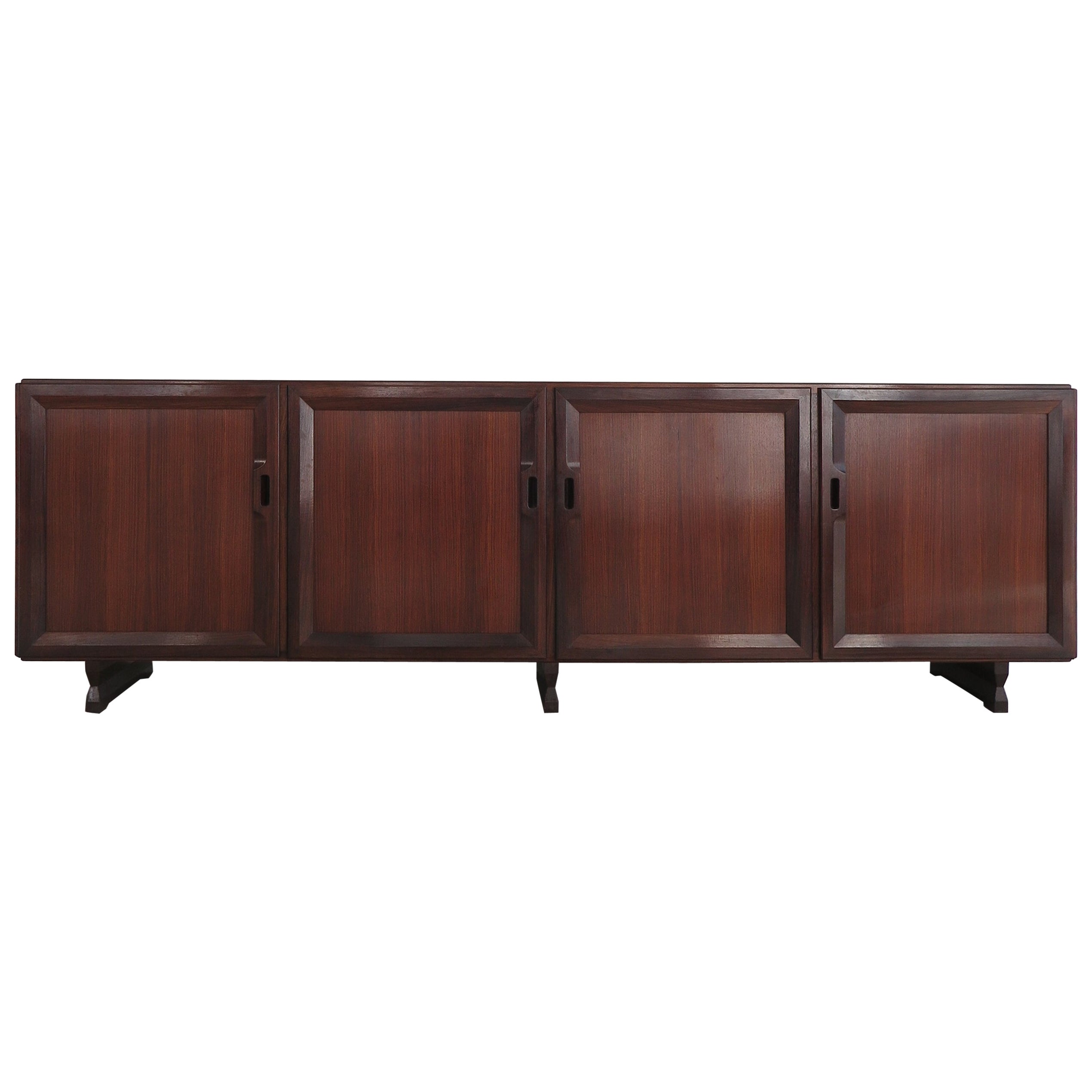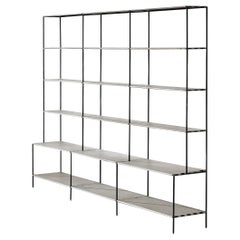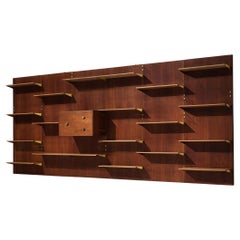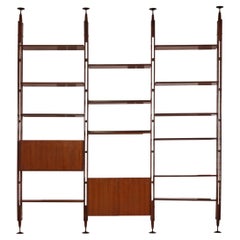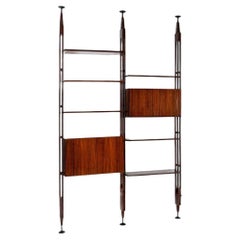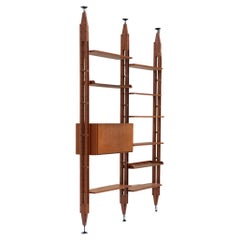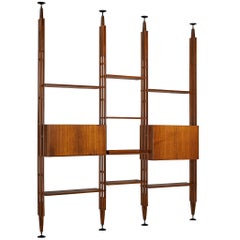
Franco Albini for Poggi 'LB7' Wall Unit or Room Divider in Teak
View Similar Items
Franco Albini for Poggi 'LB7' Wall Unit or Room Divider in Teak
About the Item
- Creator:Franco Albini (Designer),Poggi (Manufacturer)
- Dimensions:Height: 114.18 in (290 cm)Width: 94.49 in (240 cm)Depth: 13.78 in (35 cm)
- Style:Mid-Century Modern (Of the Period)
- Materials and Techniques:
- Place of Origin:
- Period:
- Date of Manufacture:1957
- Condition:Wear consistent with age and use. Every item Morentz offers is checked by our team of 30 craftspeople in our in-house workshop. Special restoration or reupholstery requests can be done. Check ‘About the item’ or ask our design specialists for detailed information on the condition.
- Seller Location:Waalwijk, NL
- Reference Number:Seller: 501155841stDibs: LU933138742162
Franco Albini
While working under the polymath Gio Ponti — arguably the most important figure in 20th-century Italian modernism — furniture designer Franco Albini nurtured a love for modern forms combined with traditional craft techniques.
Albini is widely known for working with organic materials such as rattan and cane for his chairs and other seating, but he also played a pivotal role in the Italian rationalist movement of the early 20th century, which saw architects and furniture makers applying a strict emphasis on geometry in their work. Rationalists drew on Ancient Roman architecture but rejected ornament, much in the way that Le Corbusier and celebrated Bauhaus figures such as Ludwig Mies van der Rohe had in their modernist furniture.
Albini received his degree in architecture from the Polytechnic University of Milan in 1929, and, in 1931, he founded his practice in Milan, where he tackled workers’ housing and other reconstruction projects. A gifted urban planner, he also developed the Palazzo Bianco, Palazzo Rosso and Tesoro di San Lorenzo museums in Genoa. While Albini is revered for his Margherita chair — a Triennale Milano award winner created for Bonacina in 1951 — he also collaborated with manufacturers Poggi and Cassina in the 1940s on seating, tables and more that embodied his artistic vision. Of that mid-century work, the one piece that perhaps best captures this vision is the iconic Luisa chair.
With its cherry red upholstery and sinuous wooden legs that seem to float aboveground, the Luisa is a genuine masterpiece. It is also a testament to Albini’s perfectionism, as it endured several prototypes — including one made by Knoll in the late 1940s — and took approximately 15 years to design. Poggi launched the final version of the armchair in 1955, earning Albini the prestigious Compasso d’Oro from Italy’s Association for Industrial Design. It is produced today by Cassina. Albini named the chair for someone who likely saw the process firsthand: his personal secretary of two decades, Luisa Colombini.
Find vintage Franco Albini furniture on 1stDibs.

Established in 2006, Morentz has a team of approximately 55 restorers, upholsterers, interior advisers and art historians, making it a gallery, workshop and upholstery studio, all in one. Every day, a carefully selected array of 20th-century furniture arrives from all over the world at the firm’s warehouse, where the team thoroughly examines each piece to determine what, if any, work needs to be done. Whether that means new upholstery or a complete restoration, Morentz's aim is always to honor the designer’s intention while fulfilling the wishes of the client. The team is up to any challenge, from restoring a single piece to its original glory to furnishing a large-scale hotel project.
More From This Seller
View AllVintage 1950s Italian Mid-Century Modern Cabinets
Teak
Vintage 1950s Italian Mid-Century Modern Dining Room Tables
Iron
Vintage 1960s Danish Mid-Century Modern Shelves
Metal
Vintage 1950s Danish Scandinavian Modern Bookcases
Brass
Vintage 1950s European Mid-Century Modern Bookcases
Brass, Steel
Vintage 1970s Italian Bookcases
Glass, Oak
You May Also Like
Mid-20th Century Italian Mid-Century Modern Bookcases
Wood
Vintage 1950s Italian Mid-Century Modern Bookcases
Aluminum, Brass
Vintage 1960s Italian Mid-Century Modern Bookcases
Teak
Vintage 1950s Italian Mid-Century Modern Bookcases
Wood
Vintage 1950s Italian Mid-Century Modern Shelves
Brass, Iron
Vintage 1950s Italian Mid-Century Modern Shelves
Wood
Recently Viewed
View AllRead More
Ettore Sottsass Captures a Shooting Star in This Rare 1970s Floor Lamp
Before founding the Memphis Group, Sottsass bent the rules of lighting design with the wonderfully wavy Cometa.
You Don’t Need a Fictional Fairy to Get This Real Pinocchio Lamp
Warm chalet style meets cool Bauhaus functionality in Pietro Cascella’s cleverly carved creation.
